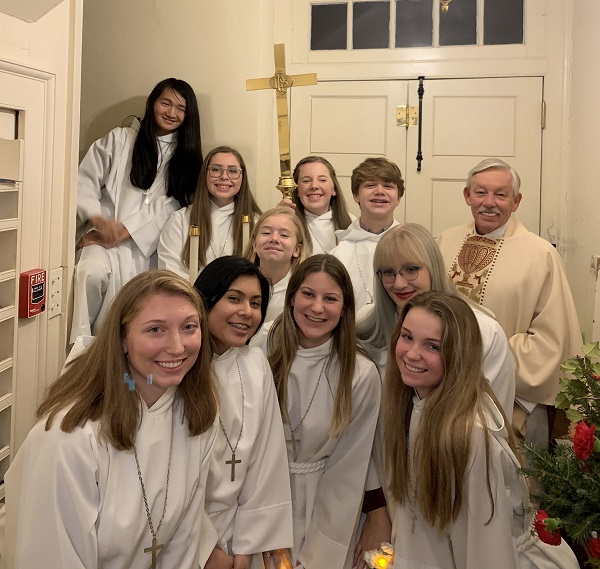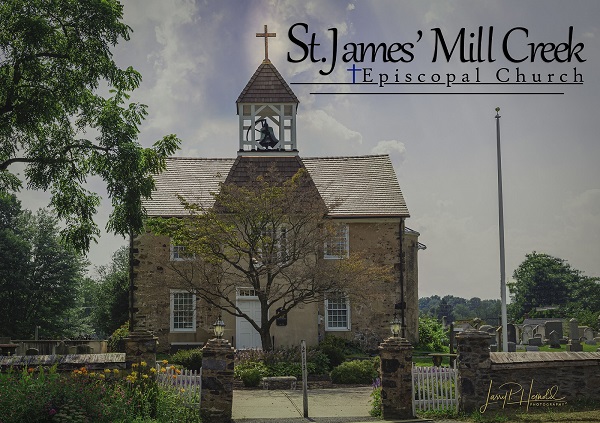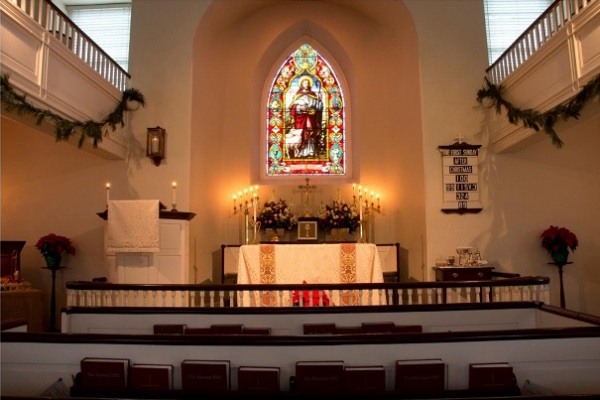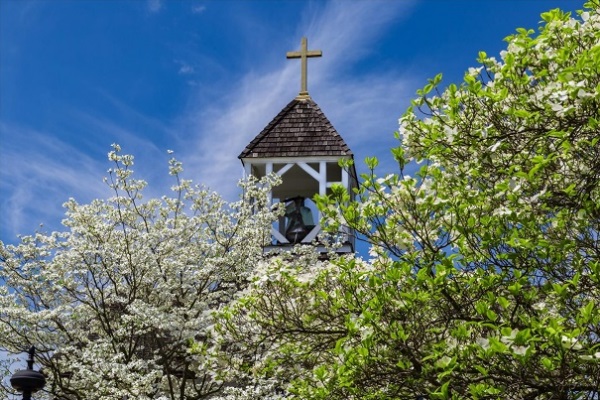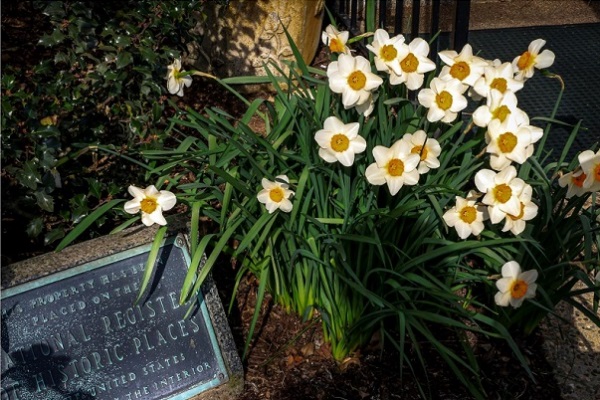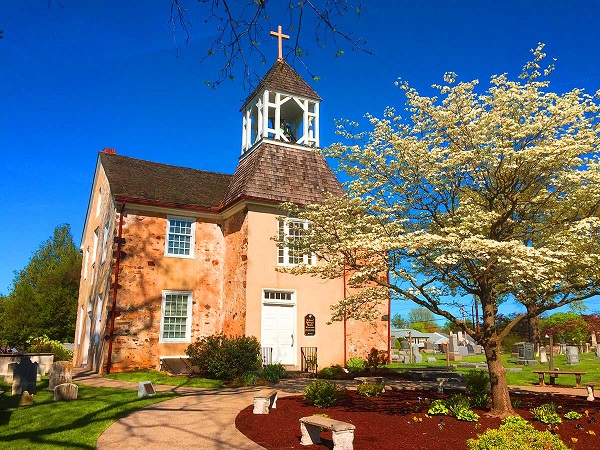 You can find us in the same location where it all began back in the early 1700s. Our delightful and unique worship space conjures up images of an earlier age even as we offer a welcoming and engaging experience that speaks to the needs of today.
You can find us in the same location where it all began back in the early 1700s. Our delightful and unique worship space conjures up images of an earlier age even as we offer a welcoming and engaging experience that speaks to the needs of today.
At St. James’ Church we take pride in being a part of a stable Christian presence in the Mill Creek area that has spanned three centuries.
We are a throughly contemporary community of believers that seeks to offer meaningful worship experiences, opportunities for learning and fellowship, the invitation to serve others, and just plain fun.
St James’ Introduction to our History
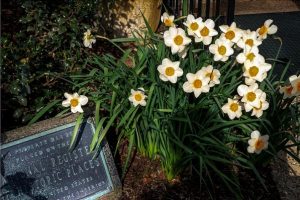 To step inside this church is to step not into the past; rather it is to enter into an enduring journey and story that are handed down from one generation to another. It is to participate in the best of our traditions preserved not as some remembrance of an earlier age, but as witness to the ever-flowing stream of our faith in the goodness of Almighty God.
To step inside this church is to step not into the past; rather it is to enter into an enduring journey and story that are handed down from one generation to another. It is to participate in the best of our traditions preserved not as some remembrance of an earlier age, but as witness to the ever-flowing stream of our faith in the goodness of Almighty God.
We invite you to not just visit this sacred place. We invite you to sit for a while in reflection, prayer, and gratitude for the people who have come through its doors and found themselves touched by the presence of God. Seek for yourself this “peace which passes all understanding,” and when you leave, our hope is that you will carry with you an appreciation for the life that our Creator has bestowed upon us all.
St. James’ Episcopal Church
Mill Creek Hundred,
Wilmington, Delaware
Tradition holds that services were first held here in 1677, though that cannot be documented. A log church is believed to have been built sometime after 1703. In, 1714, ten acres surrounding the church were endowed for the establishment of an Anglican church and school.
1714 Land endowed by James Robinson for church and school.
1716 Frame church built on present site. Cost: $1,900.
1717 First service conducted July 4 by the Rev. George Ross, Rector of Immanuel Church, New Castle, and father-in-law of Betsy Ross.
1726 John Armstrong buried in churchyard. (Oldest known gravestone in cemetery.)
1807 School building construction begun. Cost: $577.99 ½. Building used as community educational center for many years until school districts established by state.
1819 Frame church either razed or destroyed by fire sometime between 1818 and 1820.
1823 Present church consecrated by the Rt. Rev. William White, Bishop of Pennsylvania. Bishop White served as chaplain of the Continental Congress from 1777 to 1789. He was chief architect of the Constitution of the American Episcopal Church following the Revolutionary War.
1824 Act passed by legislature authorizing lottery to raise $1,200 to pay off indebtedness of church.
1857 Melodeon purchased for $60.
1859 Additional land purchased for cemetery. Stone wall built around churchyard.
1873 Ladies Aid Society (later called Parish Aid Society) founded. Initiation fee: 25 cents. Monthly dues:10 cents. Society sponsored various festivals, socials, suppers, etc., to raise funds for the parish.
1890 Sanctuary remodeled and oak altar installed. Clear-glass Palladian window removed from above altar and replaced by memorial stained-glass window. (Clear-glass window later installed in belfry.)
1894 Belfry added to church. Bell cast by McShane Bell Foundry, Baltimore, Maryland. Inscription reads “Established In 1698. First church built 1714. Praise Ye the Lord.”
1916 School building dismantled. Stones from building used to build sexton’s house. One room of house used for Sunday School until 1928, then house converted for use as a Sunday School building.
1923 Electricity installed in church. Project funded by Parish Aid Society.
1924 Construction of rectory begun. Total cost: $9,402.04.
1930 First vested choir.
1934 Addition made to sexton’s house, then converted for use as parish house.
1942 Major renovation to church. Original pews painted white with mahogany trim, walls painted ivory with white trim, venetian blinds installed, belfry rebuilt, exterior woodwork painted white.
1951 Configuration of sanctuary changed from semi-circle to rectangle.
1951 Women eligible for membership on vestry.
1958 Addition made to parish house (present-day middle section).
1960 Parking lot completed.
1963 Gothic and Elizabethan features of church interior removed. Church refurbished to reflect colonial era. Also, altar rail replaced, new altar rail kneelers added, chandelier refinished, venetian blinds replaced, new lighting installed.
1964 250th anniversary celebration of St. James’ Episcopal Church.
1971 Classroom additions made to parish house (present-day east end).
1973 St. James’ Church placed on National Register of Historic Places.
1974 Majority of parish house destroyed by fire on Halloween Eve.
1976 Rebuilt parish house dedicated May 16, by the Rt. Rev. William Clark, Bishop of Delaware.
1977 Existing sacristy enlarged. Project also included the addition of a room above the sacristy. Dedicated November 6.
1986 New organ dedicated April 27.
1988 Church interior repainted and recarpeted.
1989 275th anniversary celebration of St. James’ Episcopal Church.
1992 Altar rail needlepoint kneelers, stitched by parishioners and friends of St. James’, dedicated April 5.
1994 Central air-conditioning installed in church.
1996 Stone altar constructed in memorial garden by members of property committee. Replaced earlier outdoor altar built from a 200-year old Linden tree that was eventually destroyed by termites and carpenter ants.
2005 Memorial stained-glass window in balcony dedicated May 15.
2007 Memorial Alhborn Galanti organ dedicated September 16.
2010 Rectory converted to day center for use by Family Promise of Delaware.
2013-2014 300th anniversary celebration of St. James’ Episcopal Church Mill Creek Hundred.
2020 Downstairs of church recarpeted.
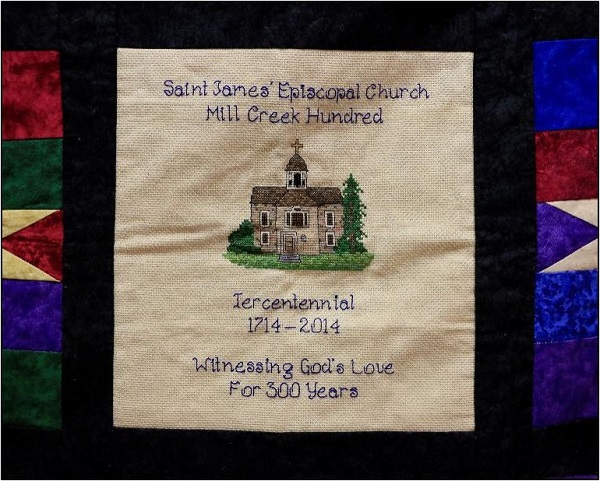 For a more in depth history, please enjoy this account of the life of St. James’ Church:
For a more in depth history, please enjoy this account of the life of St. James’ Church:
Tercentennial History Booklet
